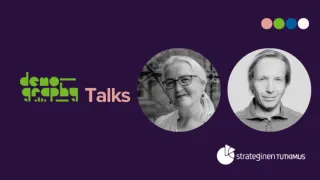LIFECON Life course and economic implications of demographic change

The LIFECON project examines how demographic changes are reflected at different stages of the life cycle.
Population ageing challenges the resiliency of the welfare state. In the LIFECON project, we aim to find solutions for this.
We focus on different phases of the life course, including
- family formation
- working life
- and health and care at the end of life.
We also study the implications of demographic change for the macroeconomy and public finances.
We provide decision-makers and experts with information on the causes, consequences and solutions related to the changing structures of the Finnish population.
Quotation
The long-term sustainability of the welfare state requires timely fiscal policy decisions that adapt to population changes. The burden should not be passed on to future generations.

See also
Briefing package published: The Demographic Changes challenges the Sustainability of the Finnish Society









